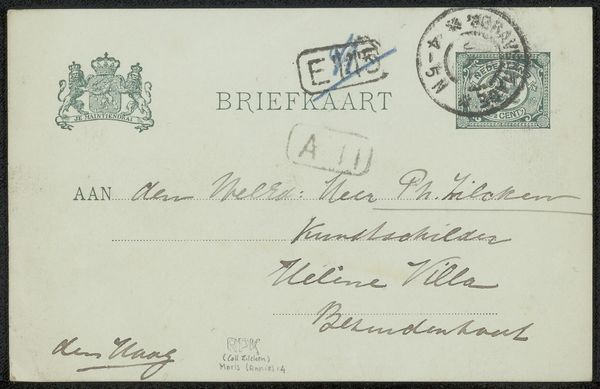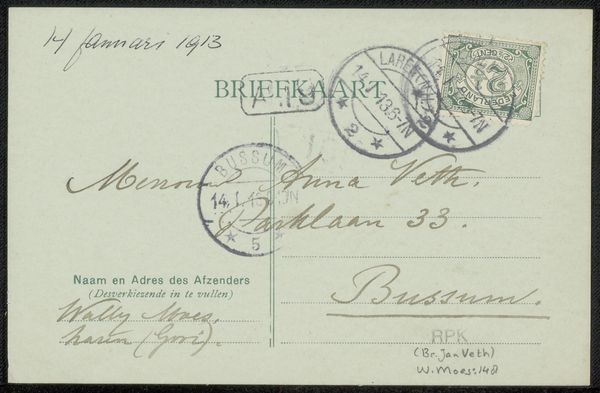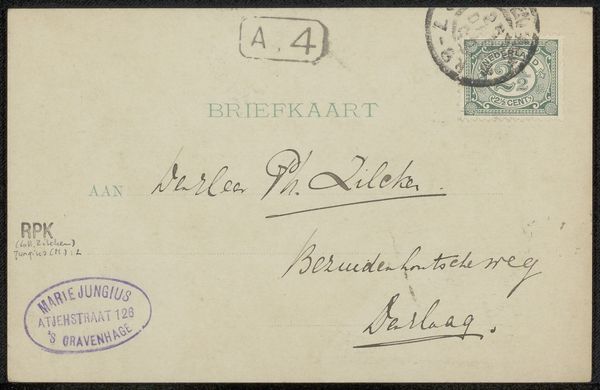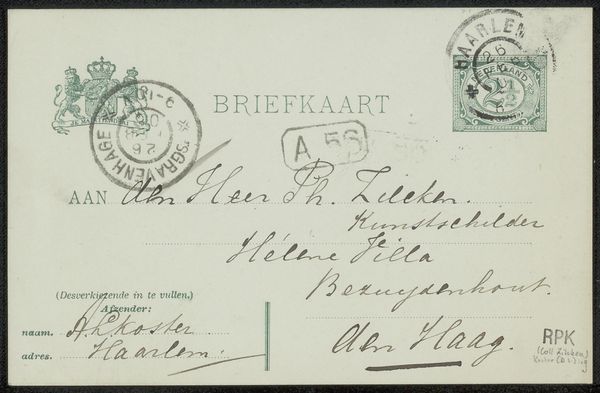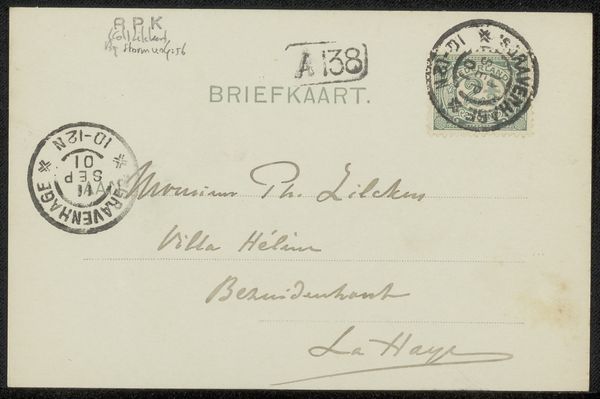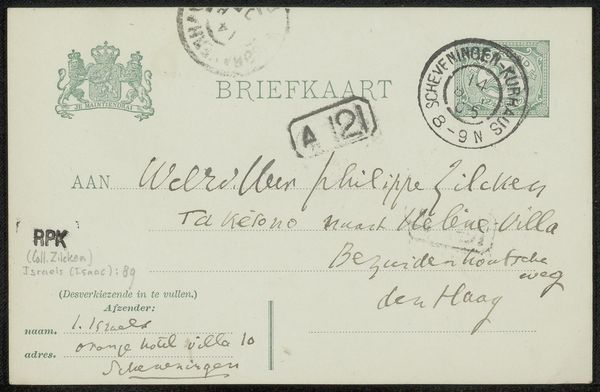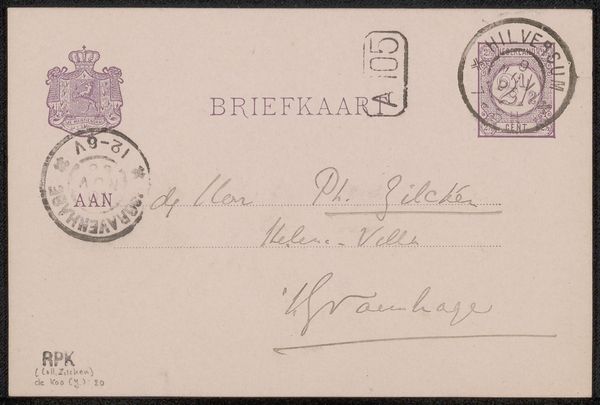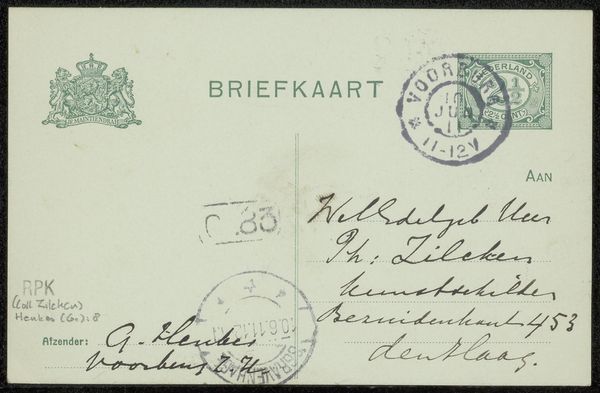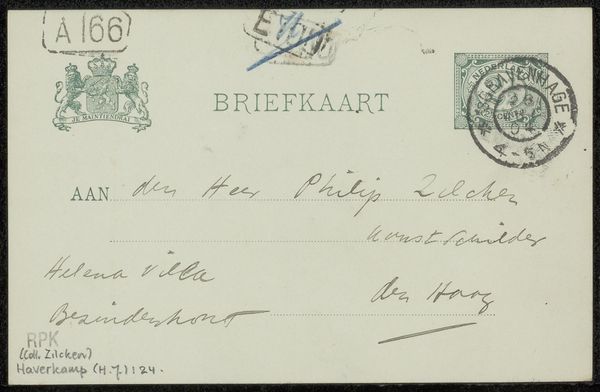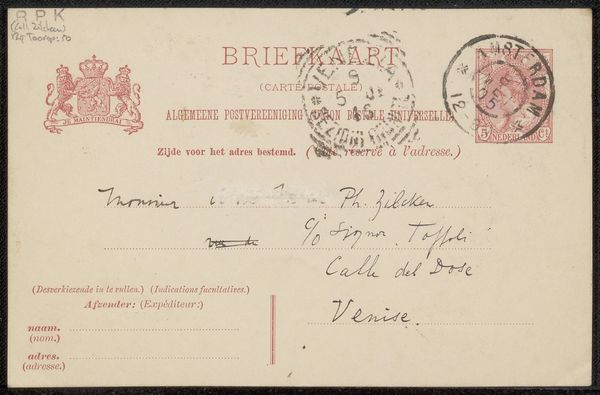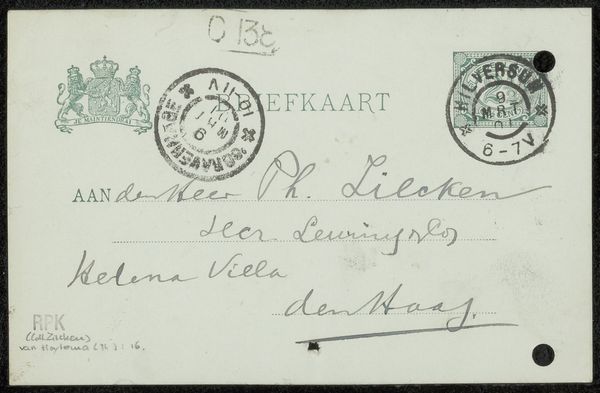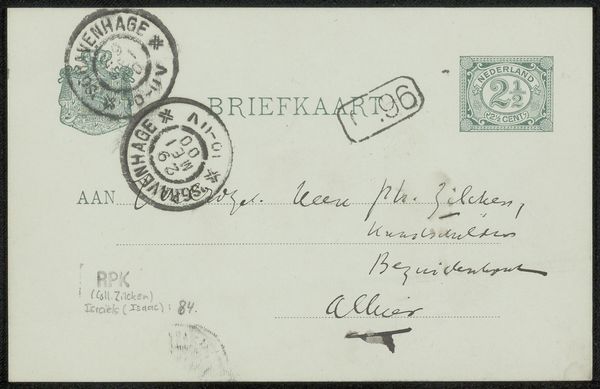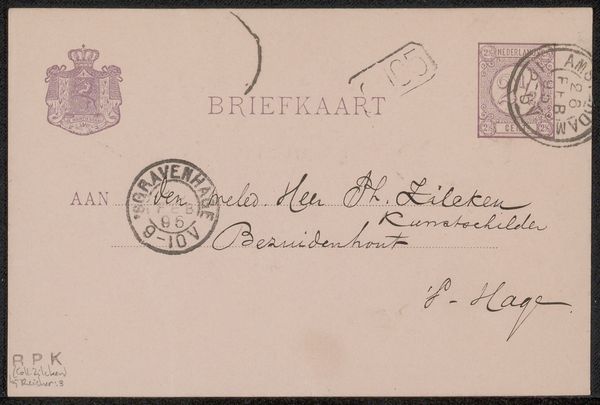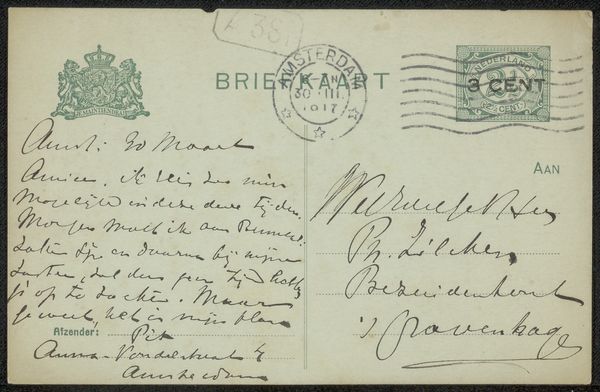
drawing, paper, ink, pen
#
drawing
#
pen sketch
#
paper
#
ink
#
pen
Copyright: Rijks Museum: Open Domain
Curator: Looking at this work by Hendrik Johannes Haverman, likely from sometime between 1905 and 1925, what’s your initial read? It’s a simple pen and ink drawing on paper, a postcard to be precise. Editor: Intimate, but also official in a way. The handwriting gives it a personal feel, of course, but the stamps and pre-printed text strike a slightly more formal note. The message feels very tactile in how its inscribed. Curator: The stark black lines of the ink create a clear structure against the off-white paper. Haverman seems focused on communicating the written message, rather than emphasizing any pictorial flourishes, though he is using calligraphic lines to add a particular style to the handwritten words. Editor: It's the symbols, too, though – a micro-narrative embedded here. A brief message on the state insignia acting almost like a royal warrant; the circular postal stamp performing the function of validation and transit across space. It carries so much implied authority! Curator: Indeed. And the placement of each element? Haverman carefully considers the plane of the paper, filling the available space to create a harmonious composition. It is visually satisfying because he does not impose, in a sense. Each textual area and stamp seems like it naturally occurred there. Editor: You see order; I see layers. Look at that postal mark, partly obscuring the pre-printed ‘BRIEFKAART’. It signifies the journey the card has undertaken, the multiple hands it's passed through, a fleeting moment frozen in time, or more accurately space! Curator: Do you think it's an important journey that makes this card meaningful, or do the individual pictorial decisions of the writer to compose the card? The text itself might be somewhat prosaic— Editor: Precisely, that intersection—where the mundane activity of sending correspondence acquires an aura because it now tells of an historical relationship. This ordinary thing has become extraordinary, don't you agree? Curator: I find myself reconsidering how Haverman manipulated these commonplace forms to create this whole artwork—so structured, yet somehow so spontaneous. Editor: It reminds us that every artifact is essentially a vessel laden with meanings – if we are sensitive enough to look. The emotionality comes from recognizing the interplay of private intentions manifested within this field of standardized marks, an intersection with our collective symbols.
Comments
No comments
Be the first to comment and join the conversation on the ultimate creative platform.
